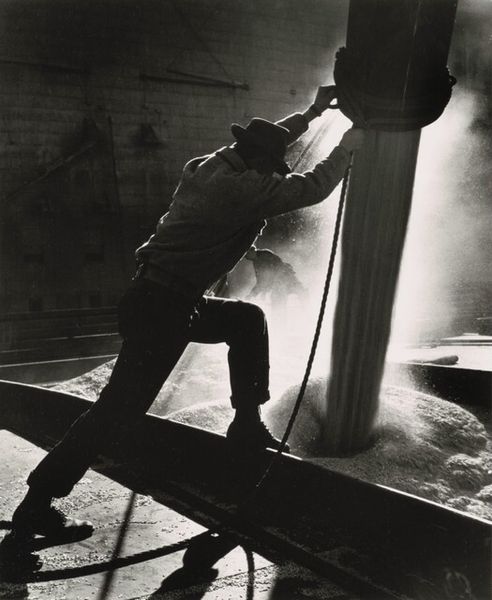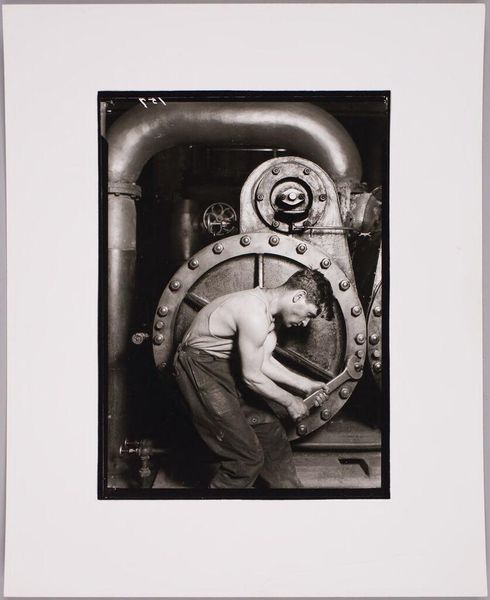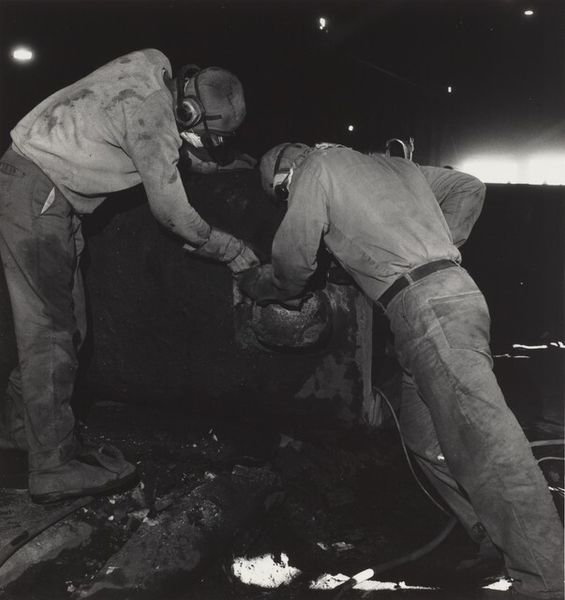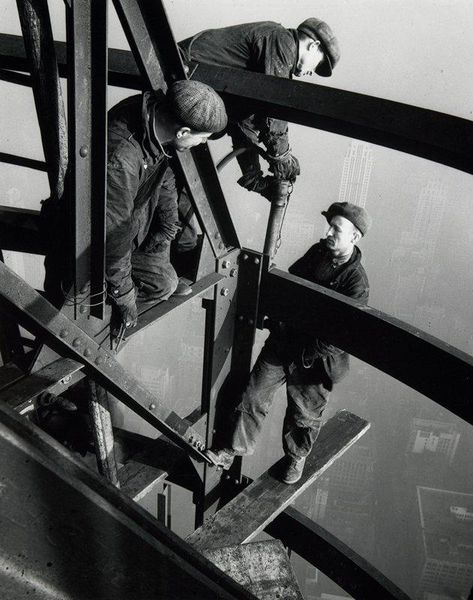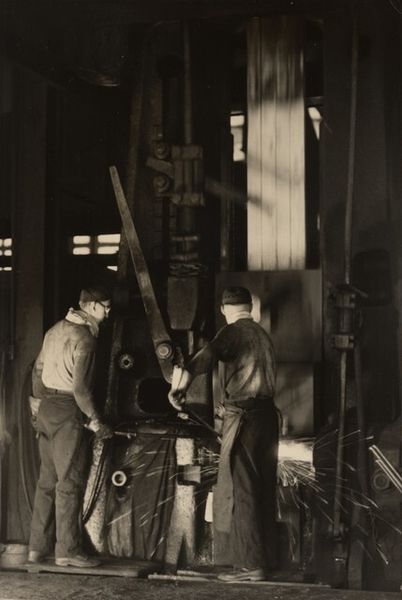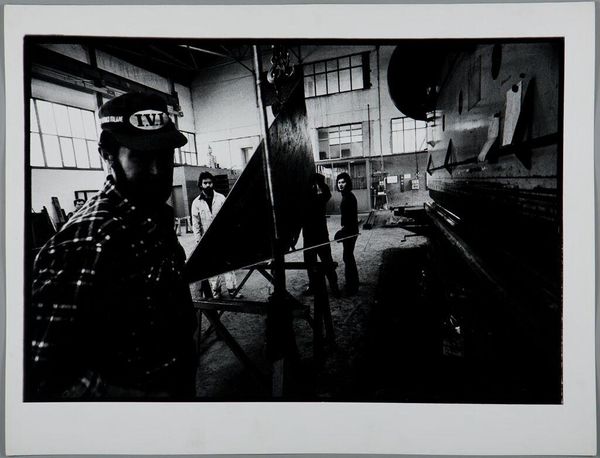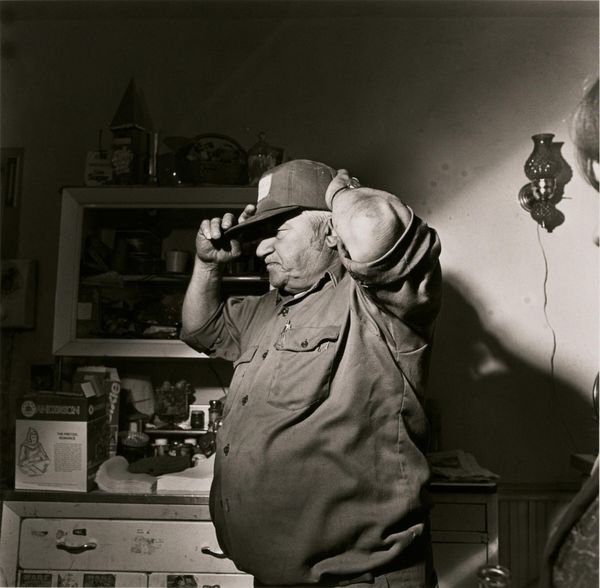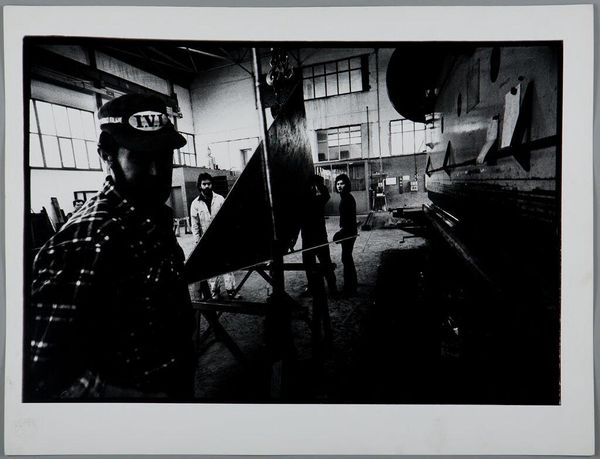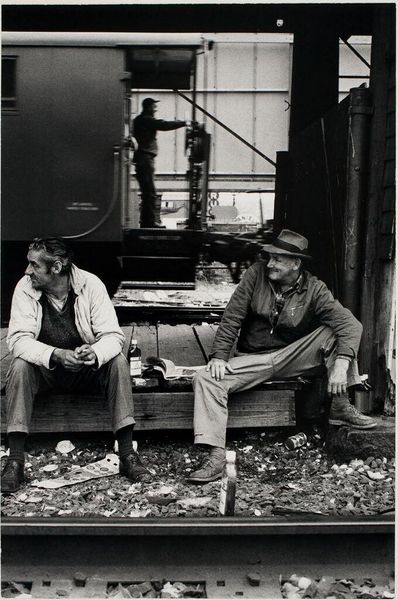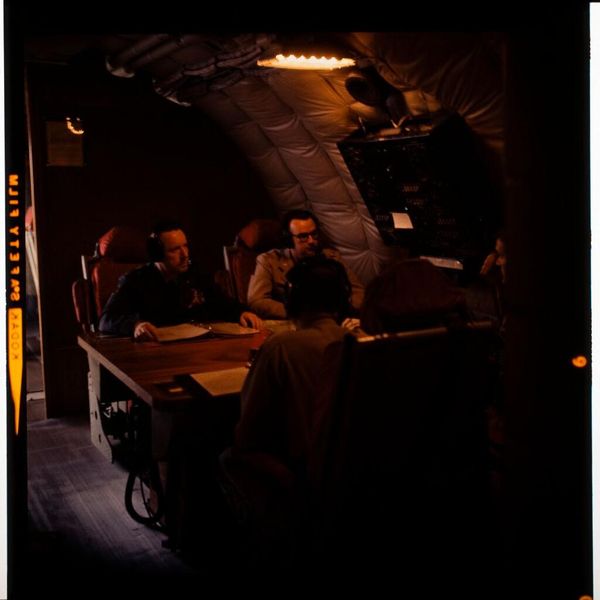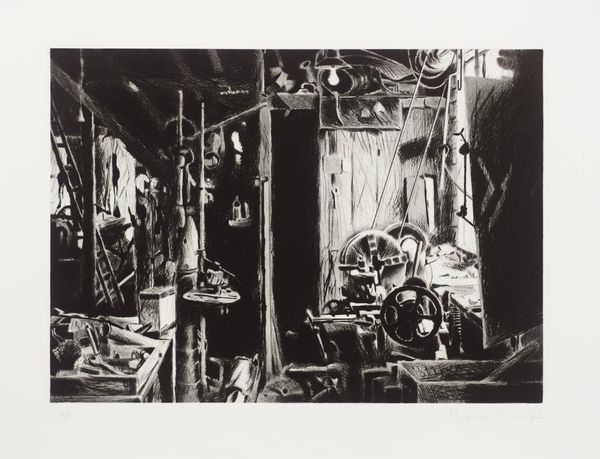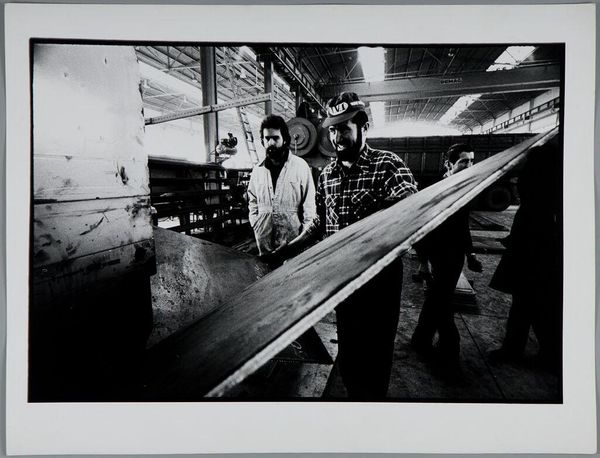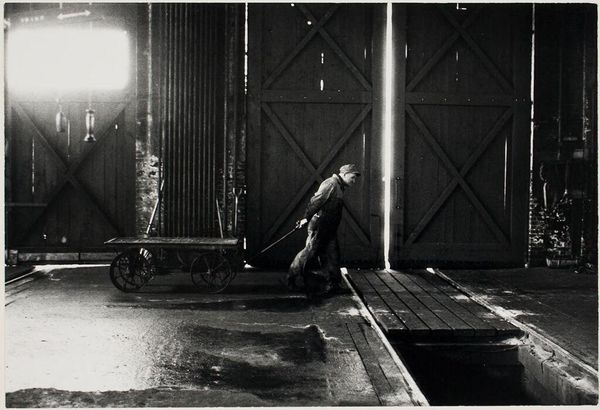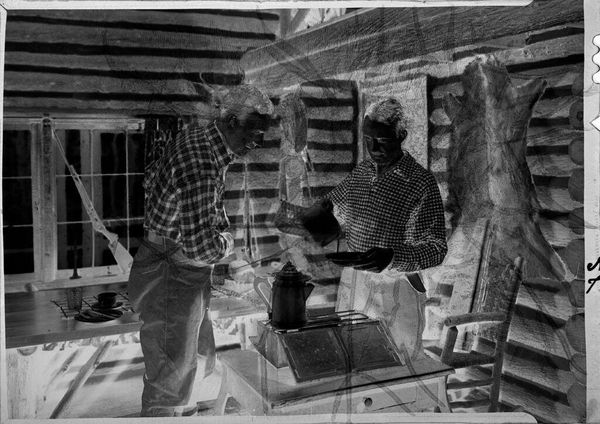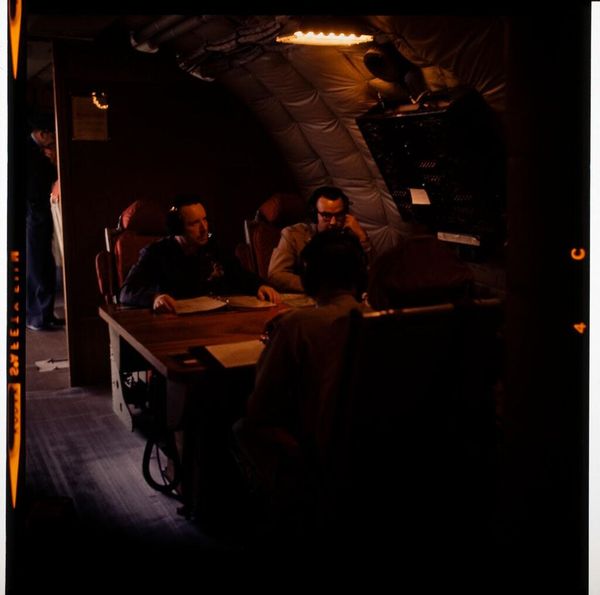
photography, gelatin-silver-print
#
portrait
#
black and white photography
#
archive photography
#
photography
#
historical photography
#
black and white
#
gelatin-silver-print
#
monochrome photography
#
ashcan-school
#
genre-painting
#
realism
#
monochrome
Dimensions: image: 36.4 × 36.7 cm (14 5/16 × 14 7/16 in.) sheet: 50.3 × 40.4 cm (19 13/16 × 15 7/8 in.)
Copyright: National Gallery of Art: CC0 1.0
Curator: Larry Fink captured this photograph, titled "John Sabatine's Garage, Martins Creek, Pennsylvania," in 1990. It's a gelatin-silver print, offering a stark view into what seems to be an intense mechanical repair. Editor: The immediate feel is one of concentrated labor, shrouded in an almost film-noir darkness. It’s intensely personal, pulling you into this gritty world. There's a working-class intimacy. Curator: It’s interesting that you say that, I'm drawn to the imagery of hands—the gestures speak to generations of manual labor and self-reliance in blue-collar communities. Note how the engine suspended by the chain, in tandem with the cigarette clenched between his lips, communicates the sheer persistence and precariousness inherent to that lifestyle. Editor: Right, the cigarette acts almost as a contemporary stand-in for those iconic images of Rosie the Riveter, it symbolizes endurance amidst pressure, a quiet defiance. This photo quietly demands we recognize these struggles. Curator: Exactly. Fink uses monochrome to strip away distractions, drawing our focus instead to the interplay of light and shadow, and most profoundly, the weight of the mechanics, both the machine's weight and the burdens they carry. There's also this feeling of nostalgia because it appears to be anachronistic to current industrial economies. Editor: It's a very effective snapshot. It’s interesting that you mention economies; consider the image's potential commentary on deindustrialization and the working class—Sabatine's garage, an intimate yet gritty space, contrasts starkly with the large factories where laborers perform automated or impersonal tasks. Curator: And it invites questions: What stories do their calloused hands tell? What are the silent conversations between worker and machine, grease and grime? The photo evokes questions about cultural memory and how society assigns value to physical labor. Editor: It's like he is deliberately offering viewers access to a community, fostering greater social understanding between social classes. We're pushed to consider our preconceptions regarding labor and its dignity in the face of sweeping changes in technology. It offers an understated yet striking critique. Curator: I concur. Ultimately, this picture reminds us of our deep need to recognize and cherish the traditions and experiences of everyday people whose legacy, if forgotten, may fade into cultural amnesia. Editor: Beautifully stated; I'll now walk away with the quiet knowledge that photography can also promote community ties and empathy amid growing societal rifts.
Comments
No comments
Be the first to comment and join the conversation on the ultimate creative platform.
